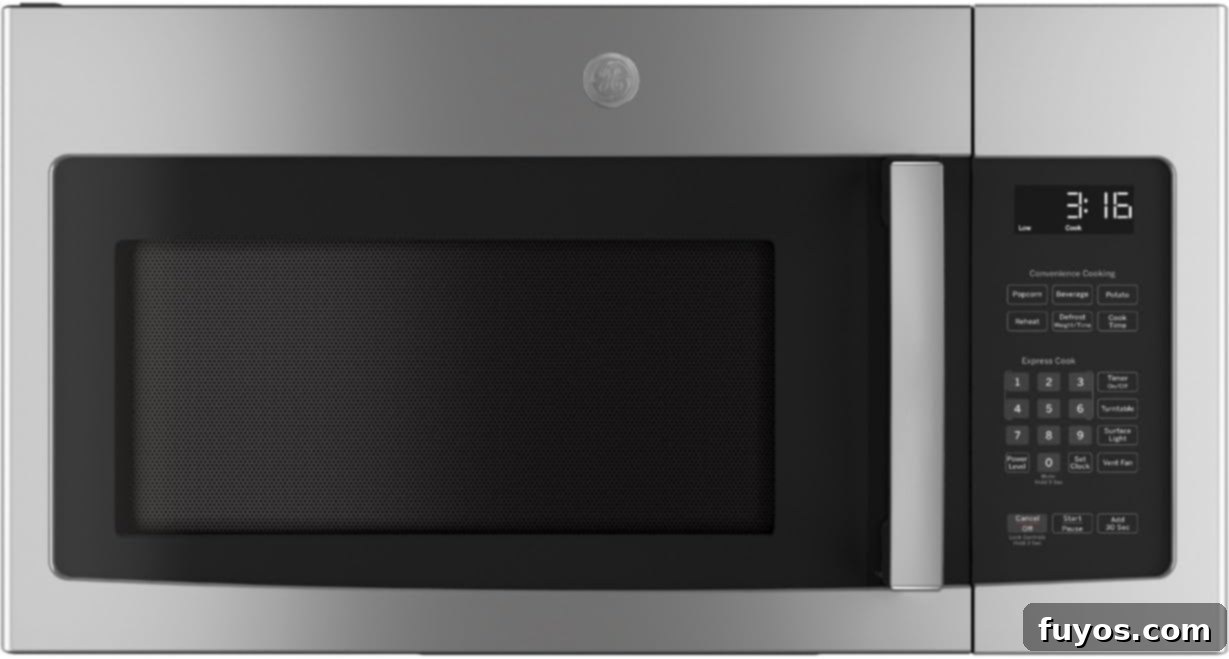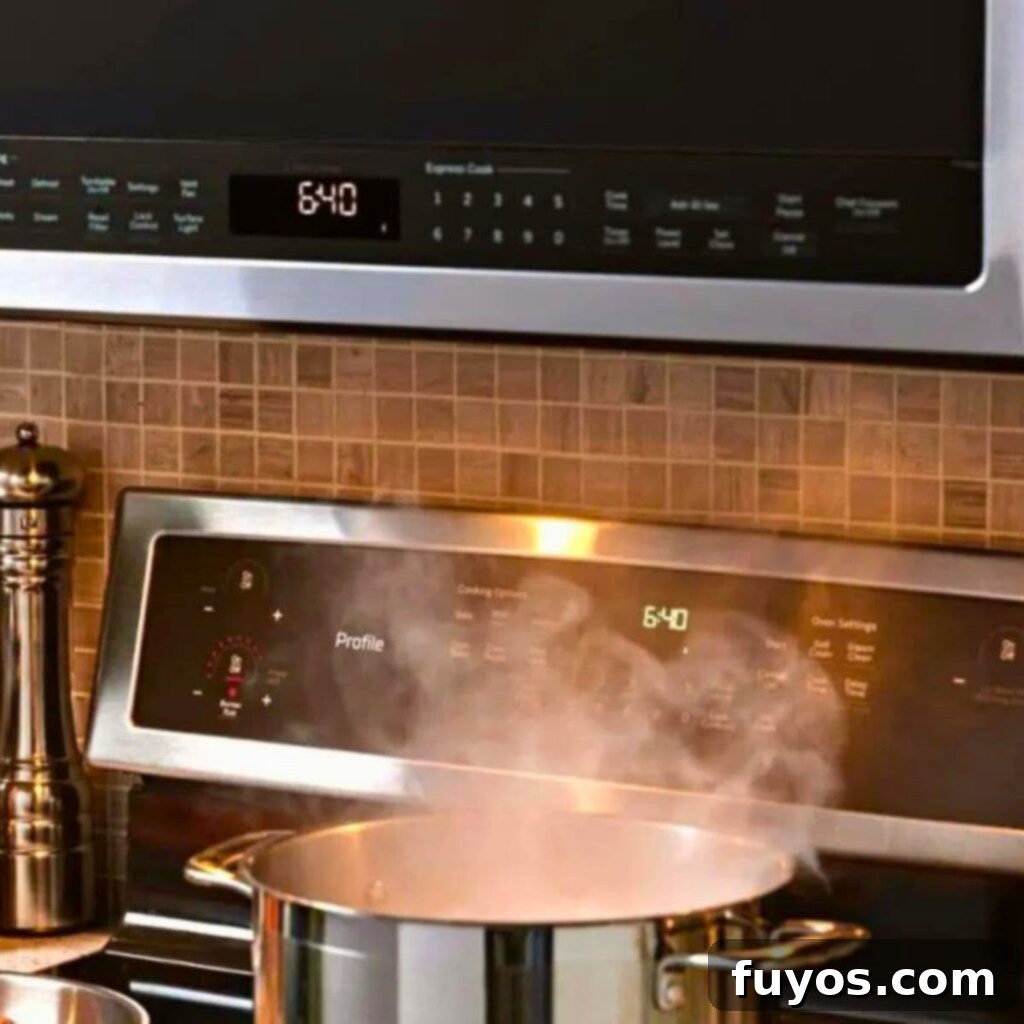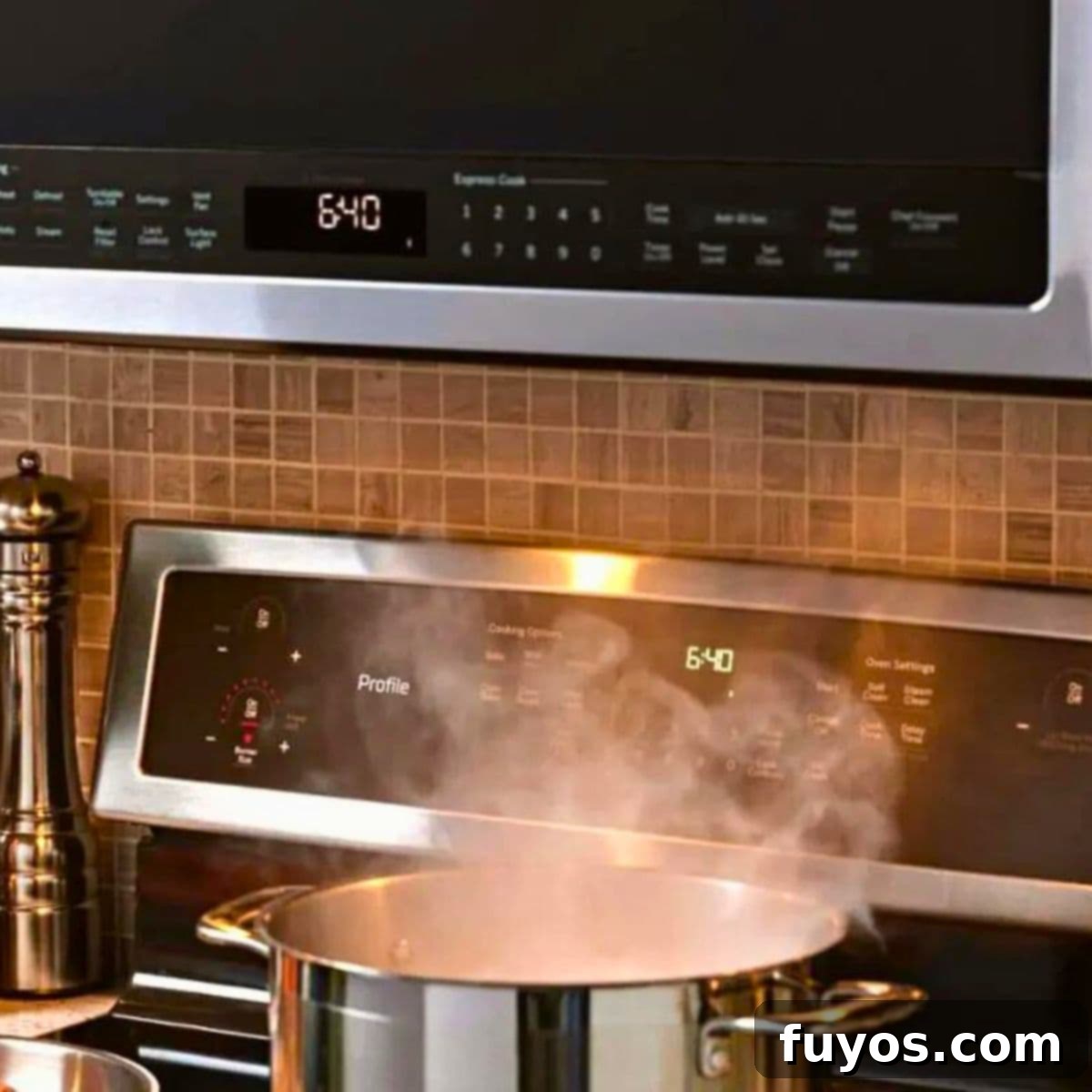Mastering Microwave Ventilation: What is a Convertible Vent and Why It Matters
Navigating the world of new kitchen appliances can often feel like learning a new language. You stumble upon terms that sound important but leave you scratching your head. If you’re currently in the market for an over-the-range microwave, one term you’ve likely encountered is “convertible vent.” It pops up on countless models, promising versatility, but what exactly does it mean for your kitchen?
In essence, a convertible vent on a microwave signifies a versatile ventilation system that can be configured in one of two ways: either to vent cooking fumes and odors directly outside your home through an external duct system, or to filter and recirculate the air back into your kitchen space. This adaptability makes convertible microwaves a highly sought-after option, as they can conform to various kitchen layouts and existing ventilation infrastructures.
Understanding this concept is key to making an informed decision about your next kitchen appliance. Let’s delve deeper into the mechanics and benefits of this ingenious feature, ensuring you’re well-equipped to choose the perfect microwave for your home.

Our Top Pick for Convertible Vent Microwaves
GE 30″ 1.6 cu. ft. Over the Range Microwave with Convertible Venting
Understanding the nuances of microwave venting options is crucial for maintaining a fresh and clean kitchen environment. The right ventilation system effectively removes cooking odors, steam, and grease, preventing them from lingering in your home. By exploring the various types, you can confidently select an over-the-range microwave that not only fits your space but also enhances your overall cooking experience.

What Are the Different Types of Microwave Vents?
When it comes to over-the-range microwaves, there are three primary types of ventilation systems, each designed to address different kitchen setups and needs. Knowing these will help you pinpoint the best option for your home:
- Ducted (also known as Vented or External Venting). This is often considered the most effective method for removing cooking byproducts. A ducted system features a fan that pulls air, smoke, odors, and grease particles from above your stovetop and pushes them through a series of ductwork. This ductwork leads directly outside your home, completely expelling the contaminated air. Ducted microwaves are typically top-vented, meaning the exhaust exit point is at the top of the unit, connecting to the ceiling or wall duct. This system requires existing ductwork or the installation of new ducts, which can be a significant undertaking but offers superior air purification.
- Non-Ducted (also known as Recirculating, Ductless, or Updraft). In contrast to ducted systems, non-ducted microwaves do not have an external venting pathway. Instead, they operate by drawing air from your cooking area, passing it through a series of filters – typically a grease filter and a charcoal filter. The grease filter captures larger food particles and grease, while the charcoal filter absorbs odors. Once the air is cleaned, it is then recirculated back into the kitchen. These units are often bottom-vented, with the filtered air being released back into the room from the front or top of the microwave. While easier and cheaper to install as they don’t require ductwork, their effectiveness in removing smoke and strong odors is less than ducted systems, and regular filter maintenance is essential.
- Convertible. The convertible vent microwave offers the best of both worlds, providing unparalleled flexibility. This system is engineered to be configured for either ducted or non-ducted operation. This means that if your home has existing ductwork, you can connect the microwave to vent externally. If ductwork is not present or not feasible, you can easily switch the unit to recirculate air internally through its filtration system. This makes a convertible microwave suitable for almost any kitchen, whether in a new build, a renovation, or an older home. Its versatility also means it can be top or bottom venting depending on the chosen configuration, making it incredibly adaptable to various installation requirements and future changes in your home or if you move.
The choice between these systems largely depends on your kitchen’s existing infrastructure and your priorities regarding air quality. If you have a vented range hood, external ductwork is likely already in place. However, installing new ductwork can be a costly and complex project, often leading many homeowners to opt for recirculating or convertible options. A convertible microwave removes the guesswork, offering peace of mind and adaptability that ensures it will work no matter your setup.
Quick + Easy Recipes
straight to your inbox
What is the Difference Between a Convertible and a Recirculating Vent on a Microwave?
This is a common point of confusion for many consumers. While a recirculating vent is a component of a convertible system, they are not entirely interchangeable terms. The key distinction lies in versatility:
A convertible vent on a microwave inherently includes a recirculating option, allowing the microwave to operate without external ductwork. However, not all microwaves with recirculating vents are convertible. A purely recirculating microwave is designed exclusively for ductless operation, meaning it can only filter and release air back into the room. It lacks the internal mechanisms or external connections necessary to switch to a ducted system.
A convertible microwave, on the other hand, comes equipped with the necessary parts (e.g., a damper for ducting, a fan that can be reoriented) to function in either mode. This means you can install it as a recirculating unit if external venting isn’t available, but you also have the option to connect it to an external duct system if you have one or decide to install one later. This flexibility is what truly sets a convertible vent apart from a basic recirculating vent.
Does an Over the Range Microwave Need to be Vented Outside?
No, an over-the-range (OTR) microwave does not *strictly* need to be vented outside. Many OTR microwaves, particularly those with recirculating or convertible vent capabilities, can function perfectly well by filtering and recirculating air back into your kitchen. This is a major advantage for homes without existing external ductwork or for those where installing new ducts would be impractical or too costly.
However, it’s crucial to understand the trade-offs. While a recirculating system helps to reduce odors and capture grease, it won’t fully remove moisture, heat, or microscopic smoke particles as effectively as an external venting system. For a recirculating system to be truly useful, its charcoal and grease filters require diligent cleaning and regular replacement. Neglecting this maintenance can lead to reduced efficiency, lingering odors, and a buildup of grease within your kitchen.
Furthermore, it’s important to note that if you frequently engage in heavy cooking, frying, or stir-frying that produces a lot of smoke and strong odors, an external venting system will always outperform a recirculating one. While internal recirculation is effective for most normal cooking tasks, it has its limitations when dealing with intense cooking fumes.
Katie’s Tip
Learn more about How to Reset the Filter on a GE Microwave to understand what this maintenance entails and keep your recirculating system performing optimally.
What Does a Convertible Vent Hood Mean?
Just like convertible vent microwaves, the term “convertible” also applies to dedicated range hoods. A convertible vent hood functions very similarly to a convertible vent microwave in terms of its venting adaptability, but it operates as a standalone ventilation appliance. Unlike a microwave, it does not have cooking capabilities.
A convertible vent hood is installed directly above your stovetop range, and its primary purpose is to capture and remove cooking smoke, odors, heat, and grease from the air. Like its microwave counterpart, it can be configured to either vent air externally through ductwork or to filter and recirculate air back into the kitchen. This makes it a flexible choice for kitchens where ductwork may or may not be present.
The key difference is that a vent hood focuses solely on ventilation. It often features more powerful fans (measured in CFM – cubic feet per minute) and more robust filtration systems than those found in most over-the-range microwaves. While you can’t cook *with* it, it is an essential tool *during* cooking on a traditional gas or electric stovetop, providing dedicated and often superior air purification.
Is a Hood Vent Better Than a Microwave Vent?
When comparing the two, it’s generally accepted that a dedicated hood vent offers superior performance for the dispersal of cooking fumes, smoke, and odors compared to a microwave vent. This is primarily due to several factors:
- Power: Dedicated range hoods typically feature more powerful fans (higher CFM ratings), allowing them to move a larger volume of air more quickly and efficiently.
- Coverage: Hood vents are often designed to provide better coverage over the entire cooking surface, ensuring that all rising fumes are captured.
- Filtration: While microwaves have filters, dedicated hoods often come with more advanced or larger filter systems, particularly for ducted models.
- Specialization: A hood vent is engineered solely for ventilation, meaning all its components are optimized for that specific task. A microwave, on the other hand, is a multi-functional appliance where ventilation is one of several features.
However, the “better” option depends on your specific needs and kitchen layout. If space is at a premium, an over-the-range microwave saves countertop space by combining cooking and venting functions into one unit. If your primary concern is robust ventilation for heavy cooking, and you have the space (or prefer a separate microwave location), a dedicated hood vent is likely the more effective choice.
How Do You Know If a Microwave is Recirculating?
Identifying whether your microwave is recirculating (ductless) or externally ducted can be quite simple. Here’s how you can determine its current setup:
The easiest way to check if a microwave is recirculating is to turn on the fan and place your hand directly under the unit, near the front. If you feel air being expelled from vents on the front or top of the microwave back into the room, it is operating in recirculating (ductless) mode. This indicates that the air is being filtered and returned to your kitchen.
If you do not feel any air movement returning into the room from the front or top vents, it’s a strong indicator that the microwave is venting upwards through an external duct system. In this case, the air is being drawn up and out of your home. You might also notice a vent cover on the exterior wall of your home directly behind or above where the microwave is located.
Another visual cue can be found by examining the top of the microwave inside the cabinet above it. If you see a metal or plastic duct pipe leading away from the microwave and into the wall or ceiling, it’s a ducted system. If there’s no such ductwork, and perhaps just a charcoal filter visible, it’s likely recirculating.
More Microwave Guides
How To Get Burnt Popcorn Smell Out Of Microwave
7 Ideas for What to Do with an Old Microwave
How Much Does a Microwave Weigh? The Heavy Info
Why Does My Microwave Keep Tripping the Breaker? Answers Revealed
How Hot Does A Microwave Get?
Why Doesn’t Ice Melt in the Microwave? Cold Truth
In Conclusion: Choosing the Right Microwave Vent for Your Kitchen
By now, you should have a clear understanding of what a convertible vent is on a microwave and how it provides ultimate flexibility for your kitchen’s ventilation needs. We’ve explored the three distinct types of microwave vents – ducted, non-ducted (recirculating), and the versatile convertible option – and discussed the pros and cons of each.
Armed with this knowledge, you are now better equipped to choose the ideal over-the-range microwave for your new home or to confidently replace an existing appliance. Whether your kitchen has established external ductwork or you need a self-contained filtration system, a convertible vent microwave offers a practical solution that adapts to various architectural and personal preferences.
Remember to consider your cooking habits and the existing setup of your kitchen. If you’re a heavy cook who prioritizes maximum air purification, an externally vented system (either a ducted microwave or a dedicated range hood) might be your best bet. For those seeking convenience, space-saving, and flexibility, particularly in kitchens without external ducting, a convertible microwave set to recirculating mode or a standalone recirculating unit will serve you well.
Ultimately, the perfect fit depends on your unique priorities. You might even consider a countertop microwave combined with a powerful, dedicated hood vent for your range, offering specialized performance for both cooking and ventilation. Whatever your choice, an informed decision will lead to a more comfortable, cleaner, and enjoyable kitchen environment.
